By Soren Schamberg
Being promoted to Premiere League, Thomas Frank and his Brentford side have brought a dynamic addition to the weekend lineups. To highlight their playing style and tactics, we don’t have to look any further than this months game against Aston Villa.
Lining up as a 3-5-2 formation allows Brentford to adjust their shape throughout the match depending on what the moment of the game calls for. Defensively, they form a compact 5-3-2 formation with man marking pressing in their half which allows the wing backs, if they step up to challenge in the flanks makes a 4-4-2 depending on the side they are on. On the attack, their wingbacks create the width of the attack while the central midfielders remain in support to help avoid a quick counter attack. This forward movement takes the shape of a lop-sided 3-2-1-4
The main focus for the team moving forward in attack is to get the ball to their central forwards either with balls over the top for either of them to bring down with a flick beyond the back line or to build up their attack through short passes using the Up-back-through method. Also, attacking wingbacks send crosses into the center forwards or supporting midfielders become a dropping option for the center forwards with their backs to goal.
Another aspect of the Brentford attack comes from well drilled set pieces where the most aerial threat are their larger players getting up into the box for the set piece.
During the recent game against Aston Villa, use of these tactics helped the Bees come from behind to win all 3 points.
Starting in their 3-5-2 formation, Brentford and Aston Villa went back and forth for the first 15 minutes, but an rushed challenge by the central midfielder, Christian Nørgaard over committed Allowed the time and opening for Emiliano Buendia to slot a pass for Danny Ings to run on to and score at the far post.
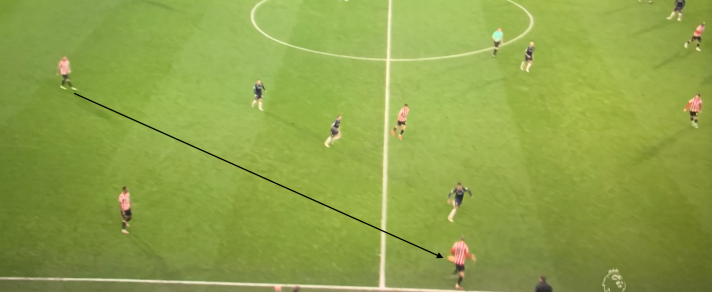
Despite this set back early in the match, Brentford persisted in their approach and get their break in the 42’ minute of play. Playing out of the back and down the right side, right back, Pontus Janssen plays the ball to Brentford’s Mads Roerslev who continues the play on the right side to an approaching Mathias Jensen while Roerslev continues his run down the line.
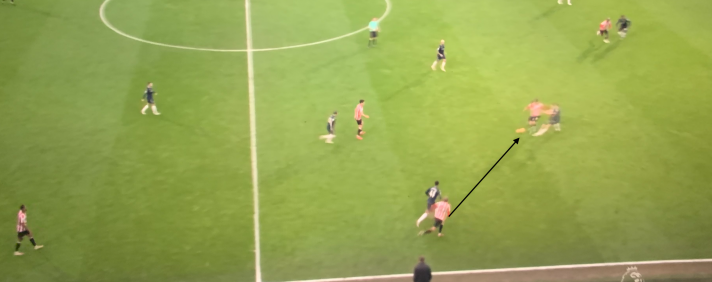
Jensen sees this and sends a reverse pass into the path of Roerslev who is able to cut the ball
into the center of the field to center froward Yoane Wissa, who is able to gain control enough to take a touch and get his shot off to even the game.
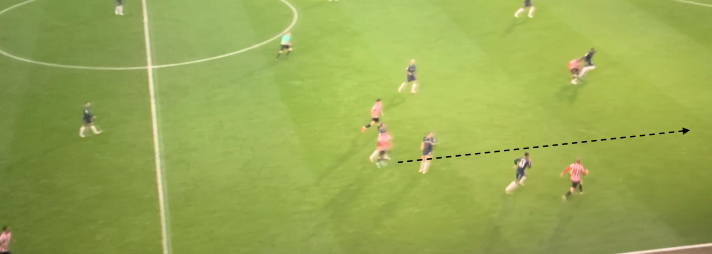
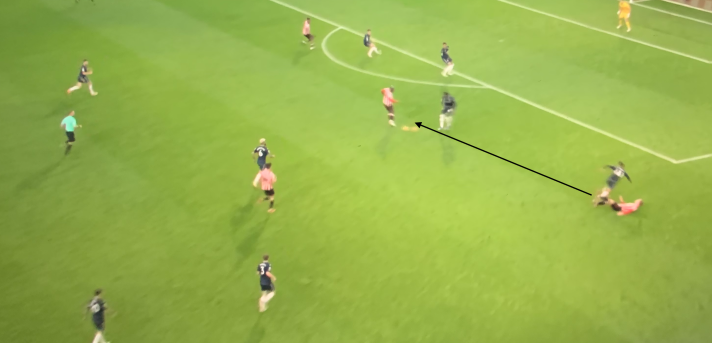
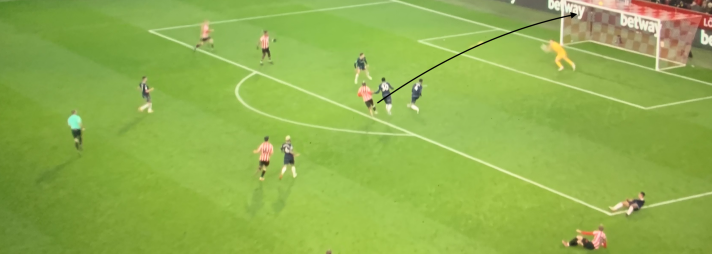
All level by half time, the decisive moment came down to another Brentford attack but this time it was them switching the field of play by an attempted overload on the left side of the field. Aston Villa outnumbered the attacking Brentford players, but a quick pass inside shifts the movement to Brentford’s favor.
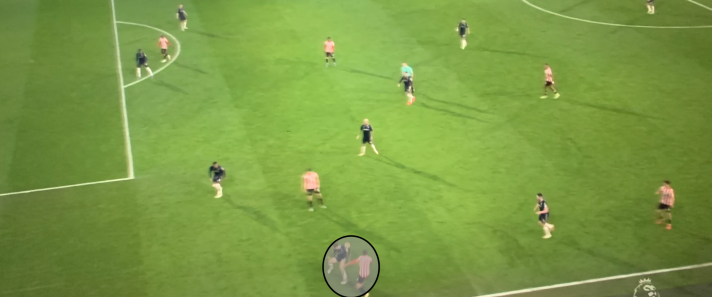
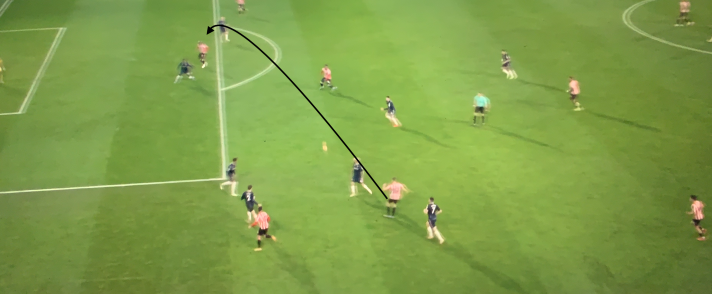
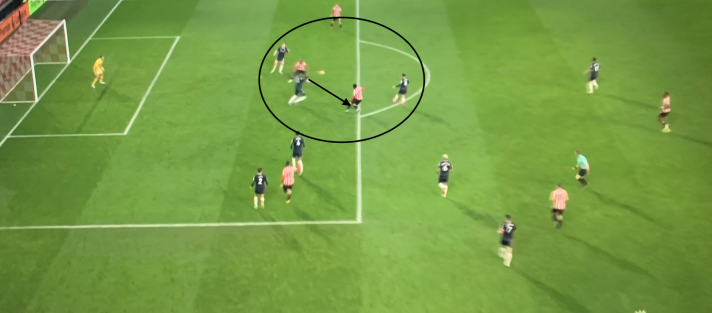
This arial ball delivered to the top of the 18 causes Villa into a position of weakness because they committed their players to that left side. The ball is brought down by Ivan Toney, where it is bobbled back to his feet and he feeds the waiting Roerslev on the outside right with enough time to take his touch and a shot.
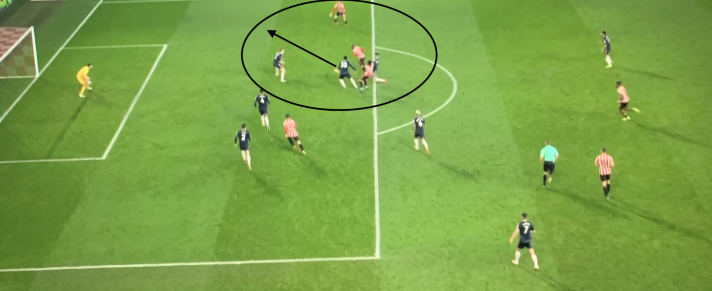
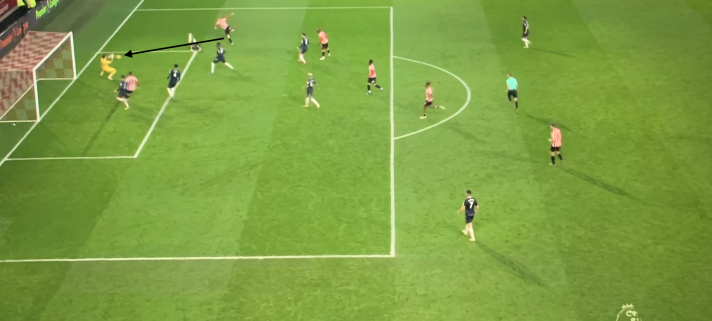
The rebound comes back out to Roerslev and he is able to place it past the Villa keeper Martinez.
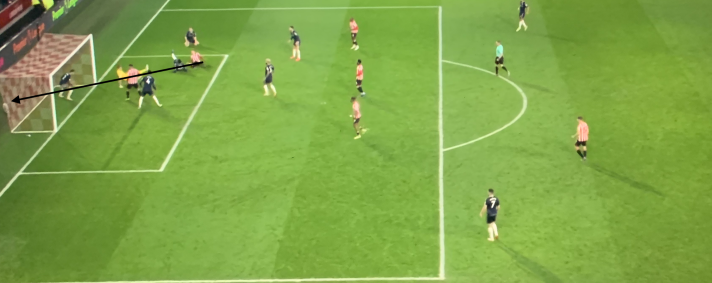
Brentford’s use of the 5 midfielders across the field and their flexibility to shift their formation depending on the circumstances and how the game is unfolding makes it understandable why they have been promoted to the Premiere League.
By Soren Schamberg


